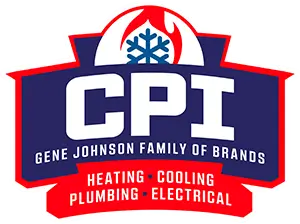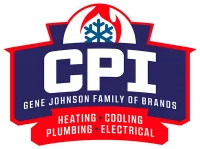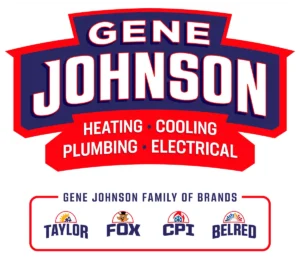How Does a Heat Pump Switch from Heating to Cooling?
Heat pumps are fascinating machines. They’re like magical boxes that can both warm and cool your home.
This unique ability is what makes heat pumps stand out in the world of heating, ventilation, and air conditioning (HVAC).
Today, we’ll peek inside these mysterious boxes and learn about their secret switch: the process that lets them change from heating to cooling mode.
Keep reading to learn more.
Heat Pumps: What Are They and How Do They Work?
Heat pumps might seem complex, but they work in a pretty straightforward way. Imagine a big sponge that can soak up heat from one place and then squeeze it out in another.
That’s what a heat pump does, but it uses some neat tricks and tools to make this happen.
Inside this machine, two main parts work together to move heat around: the reversing valve and the refrigerant.
The key to understanding heat pumps is to remember they don’t create heat; they move it. Whether it’s winter or summer, there’s always heat in the air outside.
Even cold air contains some heat. In the winter, the heat pump absorbs this heat and brings it indoors.
In the summer, it does the opposite – it soaks up heat from inside your home and releases it outside.
The Magic Tool: The Reversing Valve
Now, let’s meet the first important component of a heat pump: The reversing valve.
Picture it as a traffic controller, but for heat. It directs the flow of the refrigerant, which carries heat either into or out of your home, depending on the mode.
In the heating mode, the reversing valve guides the refrigerant in a direction that brings heat inside your home.
But when the cooling mode is activated, it shifts the refrigerant flow in the opposite direction, sending heat outside.
This is how your home stays toasty in winter and cool in summer.
The Lifeblood of Heat Pumps: The Refrigerant
Let’s turn to the second component: The refrigerant. This is a special fluid that can absorb and release lots of heat as it changes between liquid and gas states.
When the heat pump is in heating mode, the refrigerant absorbs heat from the outdoor air, even when it’s chilly outside.
Once it’s full of heat, it moves inside your home. Then, with help from the reversing valve and compressor, it releases this heat, warming your home.
But when your heat pump switches to cooling mode, the reversing valve redirects the refrigerant. Now, it absorbs heat from the inside air and releases it outside, cooling your home.
The refrigerant’s journey, driven by the reversing valve, is what makes the magic of heating and cooling possible in a heat pump.
A Deep Dive Into the Refrigeration Cycle
At the core of a heat pump’s operation lies a cyclical process known as the refrigeration cycle. Picture this as an endlessly looping racetrack.
The refrigerant, acting as the relentless runner, moves continually around this track, absorbing and releasing heat as it travels.
The Four Stages of the Refrigeration Cycle
The refrigeration cycle consists of four primary stages: evaporation, compression, condensation, and expansion.
Each stage plays a crucial part in the heat transfer process, allowing the heat pump to perform its heating and cooling functions efficiently.
Let’s take a closer look at each stage:
Evaporation Stage
The evaporation stage sets the refrigeration cycle into motion. Here, the refrigerant enters the evaporator coil, located inside your home for a heat pump in heating mode or outside in cooling mode.
This refrigerant starts in a low-pressure, low-temperature liquid state.
As air from the surroundings (outside air in heating mode, inside air in cooling mode) passes over the evaporator coil, the refrigerant inside absorbs the heat from this air, causing it to evaporate into a gas.
This process results in cooled air in cooling mode or heat extracted from the outside air in heating mode.
Compression Stage
After evaporation, the now gaseous refrigerant moves into the compressor, typically located outside in the heat pump’s outdoor unit.
The compressor’s role is to squeeze this gas, increasing both its pressure and temperature significantly.
This action transforms the refrigerant into a high-pressure, high-temperature gas, ready to move on to the next stage of the cycle.
Condensation Stage
Next, this high-pressure, high-temperature gaseous refrigerant travels into the condenser coil. In cooling mode, the condenser coil is located outside, and in heating mode, it’s inside.
As air from the surroundings (inside air in heating mode, outside air in cooling mode) moves over the condenser coil, the hot refrigerant releases the heat it acquired during the compression stage, causing it to condense back into a liquid.
This heat is either released outside in cooling mode or inside in heating mode, thereby heating your home.
Expansion Stage
The high-pressure liquid refrigerant now moves through an expansion valve, which significantly reduces its temperature and pressure, readying it to repeat the cycle.
By rapidly decreasing the refrigerant’s pressure, the expansion valve causes its temperature to drop as well, returning the refrigerant to a low-pressure, low-temperature state.
This refrigerant then reenters the evaporator coil, ready to absorb heat and evaporate again, thus completing the refrigeration cycle.
Operational Modes of a Heat Pump
A heat pump stands as a versatile HVAC solution due to its ability to function in two distinct operational modes: heating and cooling.
This duality enables it to offer a tailored response to varying climatic conditions, providing year-round comfort.
Heating Mode: Warming Up Your Winter
In the winter, the heat pump operates in the heating mode. During this mode, it behaves akin to an energy-efficient space heater.
It extracts heat from the external environment and brings it into your home. This might seem counterintuitive, as we usually perceive the outside air to be cold during winter.
However, even cold air contains some heat, and the heat pump can efficiently extract this heat to warm your home.
Cooling Mode: Your Summer Comfort Companion
As seasons change, so does the heat pump’s operation. In the summer, it transitions to the cooling mode, transforming itself into an air conditioner.
It absorbs heat from the interior of your home and releases it into the external environment, thereby cooling your indoor spaces.
Tuning the Temperature: The Thermostat Settings
The thermostat plays a pivotal role in the functioning of a heat pump.
Acting as the command center of the system, the thermostat helps manage and maintain the desired temperature within your home.
It’s the thermostat that guides the heat pump on when to switch modes, based on the temperature you’ve set.
Setting the Desired Temperature
Using a thermostat is fairly straightforward. You set the desired temperature for your home on the thermostat, and it communicates these settings to the heat pump.
For example, in the winter, you might set the thermostat to a cozy 21 degrees Celsius (70 degrees Fahrenheit).
The thermostat sends this information to the heat pump, which then starts working in heating mode to achieve and maintain this temperature.
The Switching Mechanism
If the indoor temperature falls below what’s set on the thermostat, it signals the heat pump to initiate heating mode.
Conversely, if the thermostat detects that the indoor temperature has risen above the set point in the summertime, it triggers the heat pump to transition into cooling mode.
This automatic switching between modes ensures your home remains comfortable throughout the year.
Frequently Asked Questions About Heat Pumps
Can a heat pump operate in both heating and cooling modes simultaneously?
No, a heat pump cannot operate in both modes simultaneously. It can either work in heating or cooling mode.
How does the thermostat help in the operation of a heat pump?
The thermostat acts as the command center of the heat pump system. It allows you to set the desired temperature for your home and communicates these settings to the heat pump.
Based on the thermostat’s settings and the current indoor temperature, the heat pump will either initiate the heating mode or the cooling mode to maintain a comfortable indoor environment.
Is a heat pump energy-efficient?
Yes, heat pumps are typically very energy efficient. Rather than generating heat, they move existing heat from one place to another, which requires significantly less energy.
What happens if the reversing valve in my heat pump gets stuck?
If the reversing valve gets stuck, the heat pump would be unable to switch between the heating and cooling modes.
This could lead to the heat pump getting stuck in one mode. If this happens, it’s recommended to reach out to an HVAC professional to fix the problem.
Making the Right Choice with CPI Plumbing & Heating
The incredible engineering of a heat pump can provide year-round comfort for your home. However, choosing the right heat pump and ensuring its correct installation and maintenance can be a challenging task. That’s where CPI Plumbing, Heating & Cooling comes in.
As an experienced and trusted name in the industry, CPI offers personalized guidance to help you select a heat pump that’s just right for your home.
Our team considers factors like the size of your home, local climate conditions, energy efficiency needs, and your budget.
We aim to provide a solution that meets your unique needs and ensures optimal indoor comfort in every season.
But our services don’t stop at helping you choose the right heat pump.
We also provide professional installation services, ensuring your new heat pump is set up correctly for maximum efficiency and longevity.
So, if you’re considering adding a heat pump to your home or if your current heat pump needs professional attention, don’t hesitate to reach out.
Learn more about our heat pump installation and repair services by calling (360) 822-9306 today.


